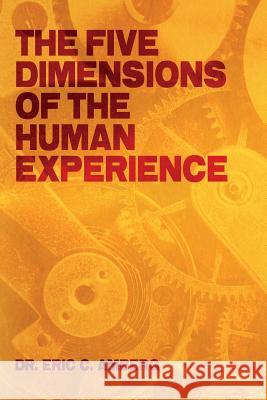The Five Dimensions of the Human Experience » książka
The Five Dimensions of the Human Experience
ISBN-13: 9781491076118 / Angielski / Miękka / 2014 / 286 str.
Dr. Eric C. Amberg introduces a new way of looking at the human condition that will radically change how readers think about well-being and will enable them to better present themselves, challenge labels, and achieve a higher level of self-realization.
The Five Dimensions of the Human Experience is a nonfiction presentation about the nature of who we are, how we function, and how we grow as human beings, centered on five key components that overlap and interact to shape the human experience for every living person-the biological, mental, genetic, educational, and energetic/spiritual dimensions of being.
Using research from the fields of psychology, medicine, genetics, physics, and spirituality, and supporting his propositions with practical applications and real world results gleaned over the course of his career, Amberg delivers innovative insights on the concepts of life, power, individual evolution, personal giftedness, and our place within the psychosocial sphere.
Written with every reader in mind and accessible to professionals and laypersons alike, The Five Dimensions of the Human Experience extends an outstretched hand to anyone who wants to embrace the human condition and improve their quality of life.
Dr. Eric C. Amberg began his career as a fifth grade teacher in New York City, and later moved into the mental health industry, where he has worked as an instructor and clinician for approximately thirty years. He is currently working to develop an integrative program using a five-dimensional approach to treat veterans with diagnoses such as posttraumatic stress disorder, Gulf War illness, traumatic brain injury, and chronic pain. Kirkus Book Review: A schematic new analysis of the human condition. Basing his nonfiction debut on extensive experience in the mental health industry-dealing with, among other things, patients with PTSD-Amberg likens the totality of the human experience to an extremely complex piece of machinery, the parts of which need to be working in perfect alignment in order for the machine to function at its peak. Though "humans are clearly much more complex than the machinery we create," human life can malfunction, and Amberg has isolated five "dimensions" whose efficiencies are essential to the success of the whole. The biological deals with physical health and well-being; the psychological encompasses all varieties of human interaction; the educational "inevitably gives definition to who we are"; the genetic concentrates on DNA, which contains "that which makes us special"; and the energetic connects humans to whatever they conceive of as God. (This is a spiritual rather than strictly religious book; all denominations, even atheists, might find it thought-provoking, since Amberg makes ample allowance for secular forms of inspiration.) The book takes an in-depth look at each dimension in turn, and given the author's specific area of expertise, it's not surprising that a group of seven case studies is the book's most accomplished and rewarding section. These case studies involve people struggling with challenges such as substance abuse, learning disabilities and, of course, PSTD, and Amberg uses them to good effect as illustrations of the workings of the five dimensions he's sketched out. These case studies also serve to highlight the element of personal accountability that runs through the whole book; for Amberg, " t]he more responsibility we are willing to assume, the more access we have to our internal power and intelligence." Accessing that internal power, he says, can lead to "self-actualization." There's a good deal of levelheaded, common-sense advice in these pages, all of it presented more in the clear prose of a diagnostic manual than in the fuzzy generalities of a self-help guide. An analytical, ultimately optimistic blueprint for taking charge of life and improving it.
Zawartość książki może nie spełniać oczekiwań – reklamacje nie obejmują treści, która mogła nie być redakcyjnie ani merytorycznie opracowana.











